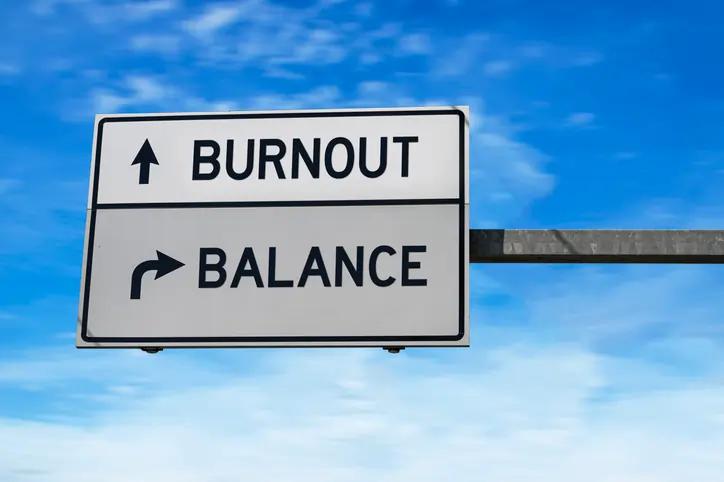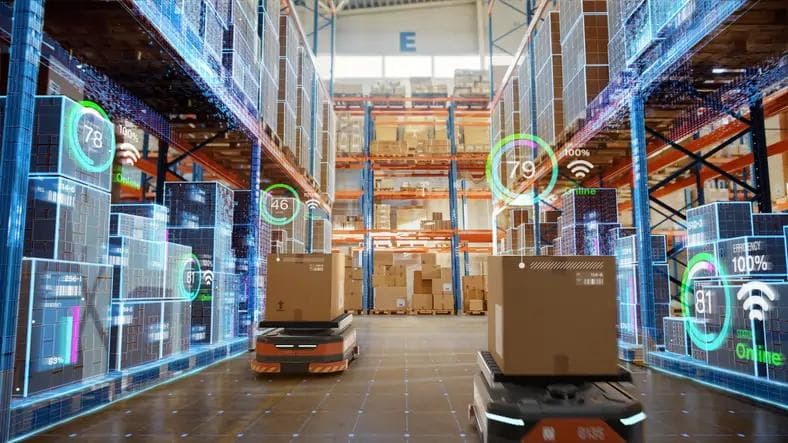Rethinking Burnout: Why Balance Requires Systemic Change
Rethinking Burnout: Why Balance Requires Systemic Change
Published by Wanda Rich
Posted on May 13, 2025

Published by Wanda Rich
Posted on May 13, 2025

Burnout is no longer treated as a personal failing—it’s recognized as an organizational problem. Defined by the World Health Organization as a syndrome resulting from chronic workplace stress that has not been successfully managed, burnout is characterized by exhaustion, increased mental distance from one’s job, and reduced professional efficacy.
In Gallup’s 2023 workplace report, 44% of employees globally reported feeling stressed during much of the previous day—the highest level Gallup has recorded. These numbers are prompting companies to reexamine how work is structured and whether current approaches to flexibility and wellness are addressing the root causes.
Burnout isn’t solely the result of long hours—it’s driven by unclear expectations, unsustainable workloads, and the erosion of boundaries between work and personal life. For organizations aiming to improve retention and performance, surface-level perks are no longer enough. Structural change is on the table.
Redefining Work-Life Balance
The idea of “work-life balance” once implied a clean separation: work stayed at the office, and personal life began after hours. But in an era of remote access, global teams, and round-the-clock connectivity, that division no longer reflects how most professionals live and work.
Many now favor the concept of work-life integration, which focuses less on rigid boundaries and more on fluidity—allowing people to manage responsibilities in ways that align with their rhythms and priorities. But integration isn’t a cure-all. Without clear organizational support, it can blur lines to the point where work expands into every part of the day.
According to McKinsey, employees today are not just seeking better compensation or flexibility—they’re rethinking the role of work in their lives. Many are looking for employers who prioritize psychological safety, autonomy, and purpose. When these values are missing, burnout risks rise—even in hybrid or flexible roles.
True balance, then, is less about time management and more about system design. Organizations must shift from offering isolated perks to building work cultures that respect personal time, clarify expectations, and model sustainable work habits from the top down.
Structural Causes of Burnout
Burnout is often attributed to personal stress or poor time management, but its roots are usually organizational. According to McKinsey, one of the most pervasive drivers is the “always-on” culture—where employees feel compelled to be constantly available, regardless of time zones or working hours. This environment erodes boundaries and makes recovery time nearly impossible.
A second driver is lack of clarity. Gartner research shows that unclear priorities and shifting expectations can lead to role ambiguity, one of the strongest predictors of burnout. When employees don't know which tasks matter most, they often try to do everything—leading to overload and frustration.
Finally, autonomy plays a critical role. The American Psychological Association has found that when employees feel they lack control over their schedules, decisions, or workflow, burnout risk increases significantly. Without the ability to influence how their work is done, even highly engaged employees may become disengaged over time.
These are not individual failings—they are signs of systems that need redesign. Addressing burnout requires identifying and correcting the internal pressures that undermine focus, clarity, and agency.
What’s Actually Working
While many organizations have responded to burnout with wellness apps, mental health webinars, or occasional “no meeting” days, research shows these one-off solutions rarely address the root causes. Sustainable improvement requires rethinking work systems and workflows—starting with time, communication, and rest.
One approach gaining traction is the four-day workweek. A 2024 global pilot involving 61 companies found that shorter weeks led to increased employee well-being, reduced burnout, and sustained or even improved productivity over a 12-month period. Importantly, 100% of participating organizations chose to continue the policy in some form after the pilot ended.
Asynchronous communication is another effective strategy. Rather than defaulting to meetings or real-time messaging, some remote and hybrid teams are shifting to tools that allow people to respond on their own schedules. This method, which avoids the pressure to be constantly available, has been shown to reduce stress and improve focus. As The New York Times reports, async models can be especially beneficial for teams spread across time zones or with differing work styles.
For employees in high-intensity roles, extended time away from work may be more effective than intermittent breaks. Wellness sabbaticals—structured periods of paid leave focused on mental and physical recovery—are being adopted by a small but growing number of firms. Unlike traditional leave, these programs are designed specifically to prevent burnout and support long-term retention.
What these solutions have in common is that they move beyond symbolic gestures. They reflect a broader rethinking of team operations and recovery priorities.
What Leaders Can Do
Addressing burnout requires more than individual resilience—it demands leadership accountability. While wellness programs may offer temporary relief, lasting change comes from how work is designed, managed, and supported from the top.
One practical step is conducting a workload audit. By assessing which teams or individuals are overextended, organizations can identify imbalances, set realistic goals, and reallocate responsibilities before burnout takes hold. This kind of structured review can also uncover inefficiencies and clarify priorities, helping teams focus on high-value work.
Recovery time is equally essential. According to the American Psychological Association, employees need uninterrupted time to recharge—whether between meetings, at the end of the day, or through scheduled breaks. Leaders set the tone by respecting this time themselves and building space for recovery into the workflow.
Setting and modeling boundaries is another key responsibility. When leaders respond to messages late at night or praise excessive availability, it normalizes overwork. By clearly defining working hours, minimizing after-hours expectations, and encouraging focused time, leaders can create a culture where sustainable productivity is the norm—not the exception.
Ultimately, preventing burnout is not about doing more for employees—it’s about removing the barriers that keep them from doing their best work. Leaders who prioritize clarity, recovery, and autonomy are more likely to build resilient teams and high-performing organizations.
What Employees Can Do
While systemic change is essential, employees also have options for protecting their well-being—especially when structural support is still evolving. One of the most effective steps is clarifying workload expectations. This can involve documenting responsibilities, proactively discussing priorities with a manager, or raising concerns about conflicting demands early. These small actions can reduce ambiguity and help prevent overextension.
Setting boundaries is another critical practice. That might include turning off notifications after work hours, blocking out focus time, or clearly communicating one’s availability. Boundaries don’t need to be rigid, but they do need to be intentional and consistently resinforced.
Recovery habits also play a role. Even short, uninterrupted breaks throughout the day—stepping away from a screen, going outside, or eating lunch without multitasking—can significantly improve cognitive focus and lower stress. According to the American Psychological Association, regular recovery time is essential for maintaining energy and preventing burnout.
While employees can't change workplace culture alone, they can support healthier norms through their own habits and conversations. Combined with structural changes from leadership, these efforts can contribute to more sustainable work environments.
Toward More Sustainable Work
Burnout is not a temporary hurdle—it’s a reflection of how work is structured, led, and experienced. Addressing it requires more than perks or time-off policies. It calls for intentional leadership, thoughtful system design, and a culture that values recovery as much as performance. As organizations continue adapting to new expectations around flexibility, autonomy, and well-being, the most effective strategies will be those that balance business goals with human sustainability. The opportunity is clear: when work supports people, performance follows.
Explore more articles in the Business category











